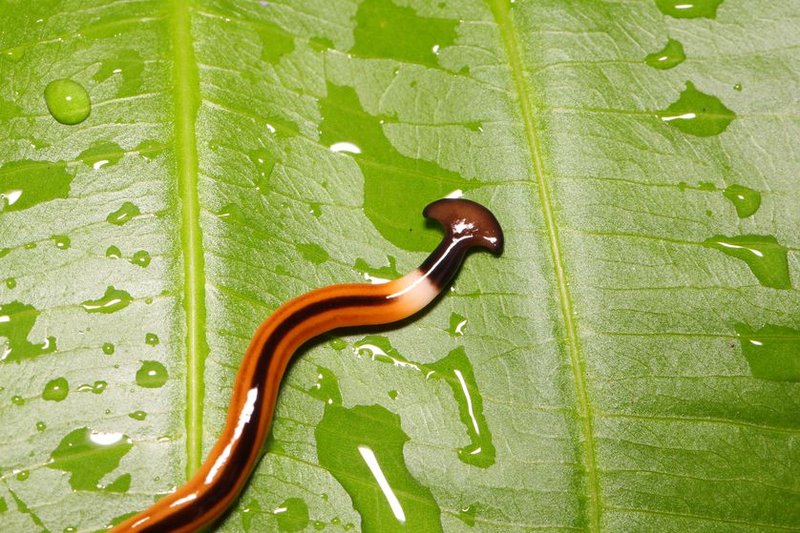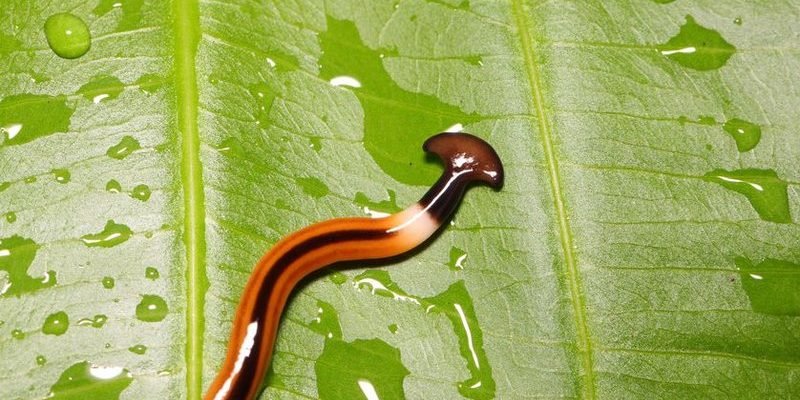
Let’s dive into the world of hammerhead worms, exploring their impact on soil and the plants that depend on it. Imagine you’re sipping coffee with a friend and sharing stories about these fascinating—but often misunderstood—organisms. You might be surprised to learn just how much this topic intertwines with gardening, ecology, and the delicate balance of ecosystems.
What Are Hammerhead Worms?
Hammerhead worms are part of the flatworm family, specifically the genus *Bipalium*. They’re known for their unique, flattened bodies and their namesake hammer-shaped heads. Typically, they can grow anywhere from a few inches to over a foot long, depending on the species and environment. These worms are mostly found in tropical and subtropical regions, but they’ve been spotted in various areas around the world, including parts of the United States.
Now, you might be wondering how they got their name. It’s pretty straightforward—their heads resemble the famous fish, with a flattened shape that gives them a distinctive appearance. You might run into them in your garden or while digging in the yard, and it’s crucial to understand what they mean for your soil health.
Moreover, hammerhead worms are *predatory*. They typically feast on earthworms, slugs, and other smaller invertebrates. This predatory nature is a significant factor when considering whether they benefit or harm soil ecosystems.
The Role of Hammerhead Worms in Soil Health
So, let’s break down their role in the soil ecosystem. On one hand, hammerhead worms are part of the ecological food web. They contribute to the balance of organisms within the soil. By preying on earthworms and other invertebrates, they may control populations of these creatures, which can be beneficial if those populations grow too large.
However, there’s a catch. Earthworms are often seen as the unsung heroes of soil health. They aerate the soil, break down organic matter, and help with nutrient cycling. So, when hammerhead worms make a meal out of these beneficial creatures, it can lead to shifts in soil dynamics, potentially harming the soil’s structure and richness.
It’s essential to weigh these factors carefully. If you have a healthy population of earthworms, the impact of a few hammerhead worms may be negligible. But in a garden where earthworms are already struggling, the introduction of these predators could spell trouble.
Are Hammerhead Worms a Threat to Gardens?
Here’s the thing: if you’re a gardener, you might feel anxious at the sight of a hammerhead worm. You might ask yourself, “Do I need to worry about these guys?” The answer isn’t straightforward. Yes, they can pose a threat, especially if they start to take over.
In gardens, the loss of earthworms can lead to several problems. Without enough earthworms, you might notice soil becoming compacted, water drainage issues, and an overall decline in plant health. Plants rely on a thriving microbial community to flourish, and when hammerhead worms disrupt this balance, it can impact your garden significantly.
Keep in mind, though, that these worms don’t lay eggs like some pests do. Their presence can be an indicator of environmental changes. If your garden’s soil is healthy, the presence of a few hammerhead worms might not be a cause for alarm. But if you see a large number of them, it may signal an imbalance that needs addressing.
How to Manage Hammerhead Worms in Your Garden
If you’ve spotted hammerhead worms in your garden and feel concerned, there are several steps you can take. Here’s a simple action plan to help you manage their population:
- Hand removal: If you’re comfortable, you can pick them up with gloves and relocate them away from your garden. This is probably the most straightforward method.
- Increase biodiversity: Introduce more beneficial insects and organisms into your garden. The more diverse your ecosystem, the better it can withstand the impact of predators.
- Avoid overwatering: Hammerhead worms thrive in moist environments. By properly managing your watering, you might deter them from hanging around.
- Soil health: Work on improving soil health through composting and adding organic material. A rich, balanced soil can support a healthy population of earthworms, which may help counteract hammerhead worms.
Each of these strategies can help create a more balanced environment in your garden. The goal is to maintain a thriving ecosystem where all creatures can coexist harmoniously.
Comparing Hammerhead Worms to Other Soil Organisms
When evaluating hammerhead worms, it’s beneficial to compare them to other soil organisms. For example, you might often think of earthworms as the champions of soil health. They help aerate the soil and decompose organic matter, which benefits plants and improves growth.
On the other hand, consider organisms like nematodes. While some nematodes are beneficial, others are harmful, much like hammerhead worms. Understanding the roles these organisms play helps paint a clearer picture of your garden’s health. Just like in any ecosystem, some creatures may seem beneficial or harmful depending on the balance of the environment.
Creating a diverse ecosystem can sometimes help suppress the negative effects of one species. You might have worms, insects, and microbes working in tandem, all contributing to a rich and healthy soil profile.
Final Thoughts
In conclusion, hammerhead worms are an intriguing part of the soil ecosystem, but they do come with both positives and negatives. They can help control populations of other soil organisms, but they also threaten the earthworms that play such an essential role in maintaining soil health.
If you ever spot one in your garden, don’t panic. Take the time to assess the situation and consider what steps you might need to take. Understanding these creatures can lead not only to better garden management but also to a richer appreciation of the complex web of life beneath our feet. So, keep nurturing your soil, and it will nurture you right back!

